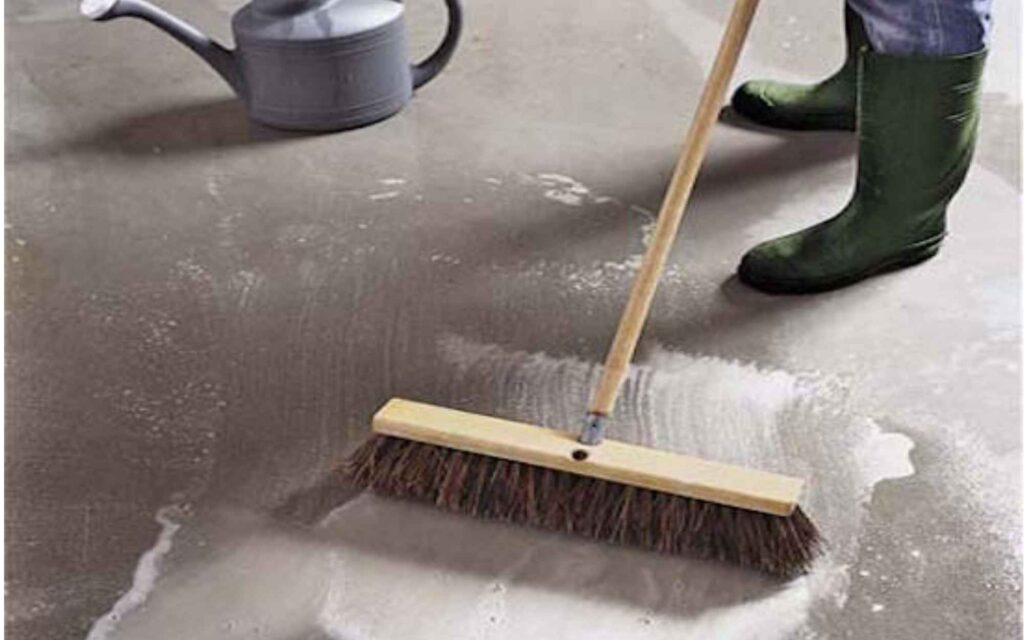If you’ve noticed a persistent odor in your garage, basement, or patio—and you’re a cat owner—the culprit could be cat urine trapped in unsealed concrete. Unlike sealed surfaces, unsealed concrete can hold onto cat pee for months, or even years, making it incredibly difficult to eliminate without the right knowledge and tools.
In this guide, we’ll uncover how long cat urine can stay in concrete, why it lingers so stubbornly, and how to finally get rid of it once and for all.
Why Unsealed Concrete Is a Magnet for Cat Urine Odors
Porosity and absorption explained
Concrete is naturally porous, filled with tiny holes and channels. When your cat urinates on an unsealed surface, the liquid seeps deep into the material, well beyond what surface-level cleaners can reach.
Uric acid and long-term odor
The most problematic ingredient in cat urine is uric acid. It forms crystals that bind to concrete and can reactivate with humidity or heat, causing the smell to return even weeks or months later.
How Long Can Cat Urine Linger in Concrete?
Time range: days, months, or even years
The truth is, cat urine can remain in unsealed concrete indefinitely if not properly treated. Many pet owners report the odor returning months or even years after they thought it was gone—especially in humid conditions.
Factors affecting duration
- Humidity: Moisture reactivates uric acid
- Temperature: Heat amplifies odor release
- Cleaning methods used: Bleach or water-only treatments don’t dissolve uric acid
- Whether concrete was sealed afterward: Sealing a contaminated floor traps odor inside
Why You Smell Urine Even After Cleaning
If you’ve mopped, scrubbed, or even power-washed the surface and still smell urine, you’re not alone. The mistake is assuming the surface is clean—while deep-seated crystals remain untouched.
🔍 Learn more: Why Cat Urine Smell Stays in Concrete
Mistakes That Trap Urine Odor Longer
Using water or bleach alone
Water may dilute the urine, but it won’t dissolve uric acid crystals. Worse, it can spread the urine deeper. Bleach, on the other hand, may disinfect but also creates toxic fumes and doesn’t remove uric acid.
Sealing concrete too soon
Sealing a concrete floor without deep cleaning locks the odor inside. Once sealed, there’s no way to reach the trapped urine unless you strip the sealer and start over.
How to Permanently Remove Cat Urine from Unsealed Concrete

Deep enzyme treatment process
The most effective approach is to use an enzymatic cleaner that breaks down the uric acid compounds. Here’s a brief overview:
- Identify the affected area (use UV light if needed)
- Apply enzymatic cleaner generously
- Let it sit for 24–48 hours
- Scrub with a brush
- Repeat as needed
Best products for lasting results
Some of the top-performing products include:
- Rocco & Roxie Professional Strength
- Bubba’s Rowdy Friends Cleaner
- OdoBan Odor Eliminator
🛒 For detailed reviews, visit: 10 Best Products to Remove Cat Urine from Concrete Floors.
When to Call a Professional Cleaner
If you’ve tried everything and the smell still lingers, it may be time to bring in the pros. Professional services use:
- Concrete extractors
- Commercial-grade enzyme or oxidizing solutions
- Odor detection tools
Compare your options in: DIY vs Professional Cleaning: What’s Better for Cat Urine on Concrete?
Should You Seal Concrete After Cleaning Cat Urine?
Pros and cons of sealing
Pros:
- Prevents future urine absorption
- Makes cleaning easier
Cons:
- If done too soon, it can trap odor
- Requires proper surface prep
Best sealing practices
- Only seal after enzyme cleaning is complete
- Let the concrete fully dry (3–5 days)
- Use a pet-safe concrete sealer
Frequently Asked Questions (FAQs)
Can cat urine evaporate naturally from concrete?
No. While surface moisture may dry, uric acid crystals remain embedded in the concrete and reactivate with humidity.
How long should I wait to seal concrete after cleaning?
Wait at least 3–5 days after cleaning to ensure the area is completely dry and odor-free before applying a sealer.
Will the old urine smell come back even after cleaning?
If cleaned improperly, yes. However, proper enzymatic treatment followed by sealing can permanently remove the odor.



